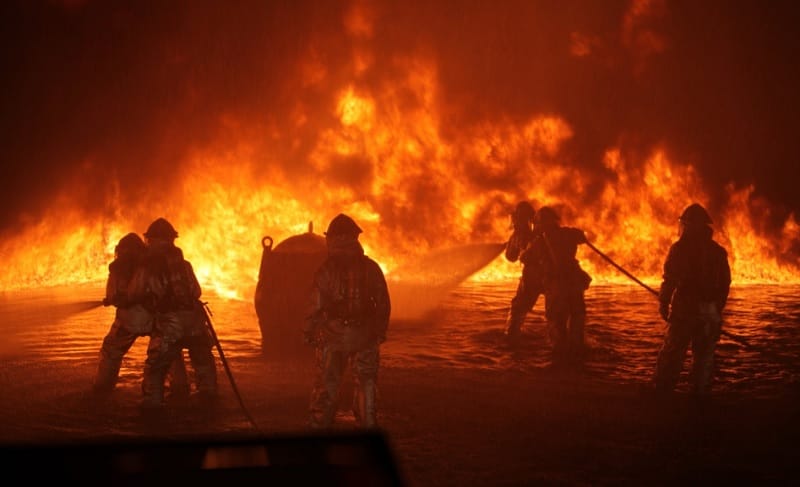Firefighters are a vital part of the internal defense of a country. They help bring down fires that can lead to damages of millions of dollars. The National Fire Protection Association states fires caused 3,800 civilian deaths and $15.9 billion in property damage in 2021. This damage can directly impact a country’s economy, making firefighters a vital part of a country.
Firefighting foam is essential for firefighters to protect themselves, their community, and the environment. According to statistics, the global firefighting foam market was around $5.5 billion in 2021 and is expected to grow further due to various advantages. However, there have been some reports of adverse health effects caused by this foam. This can be extremely dangerous if you’re a firefighter who uses firefighting foam regularly.
What Firefighting Foams Are Harmful?
Firefighting foams are fire-suppressing foams used by firefighters to control the spread of fires. They contain chemicals called PFAS (perfluoroalkyl and poly-fluoroalkyl substances), which have been linked to many health problems, including cancer, kidney disease, immune system disorders, and thyroid hormone disruption.
Many studies have been conducted to prove the same. According to one study published in the AHA Journals, exposure to PFAS can increase the risk of hypertension by 42% to 47%. This study was conducted specifically on women. However, other studies have shown the link with men, too.
Firefighting foams often contain PFOS (perfluorooctane sulfonate) or PFOA (perfluorooctanoic acid). Both these chemicals are known as “the big four” because they’re found in so many products, including firefighting foams, and be toxic at deficient levels when consumed over time by people or animals that live near contaminated areas like military bases where PFOS/PFOA was used for years before being discovered as harmful.
According to an article on the American Cancer Society website, PFOA has been identified as a 2B carcinogen, which can cause testicular cancer and kidney cancer. This shows that firefighting foams can lead to many health concerns.
How do Firefighting Foams Work?
As the name suggests, firefighting foams are aqueous film-forming foam. They’re made of water, a surfactant, and an oil. When you mix these three and apply them to an open flame or another source of heat and fire, they form an extremely stable barrier around the source of heat that prevents it from spreading further into your home or workplace.
The oil in this mixture makes it more effective than just plain water at putting out fires. Still, it also means that firefighters who come into contact with these chemicals are exposed to harmful substances in more significant quantities than otherwise.
Dangers of Using Firefighting Foam
Firefighting foam contains toxic chemicals that can cause cancer, birth defects, immune system disorders, liver and kidney damage, and damage to the nervous system. The foam also contains poly-aromatic hydrocarbons (PAHs), known carcinogens.
Firefighters are exposed to these chemicals when they use firefighting foams during training exercises or in actual fires. They may also be exposed if they touch surfaces with residual amounts of these substances left behind by previous firefighting efforts.
In addition to this direct exposure through skin contact or inhalation, firefighters may be indirectly exposed through contaminated drinking water supplies if there is runoff from landfills where old foam products have been dumped into storm drains near firefighter stations or homes where firefighters live with their families.
The AFFF Lawsuit Update
The Aqueous Film-Forming Foams (AFFF) lawsuit is one of the most recent class action lawsuits. It’s also one of the most important for firefighters because it could change how they fight fires and help protect us from harmful chemicals.
Over 3,000 people have filed claims for injuries related to their work with AFFF foams. The recent AFFF Lawsuit update consolidated these claims into multidistrict litigation (MDL). MDL No. 2873 represents all the AFFF lawsuits.
The next step on this path will likely be another trial involving DuPont’s Zarezerne brand foam product line later this year. If successful at trial and following appeals, there would be additional opportunities for firefighters injured by PFOS exposure to get compensation through filing claims against other companies that produced similar products containing PFOS within their facilities.
Who Can File a Firefighting Foam Lawsuit?
If you were exposed to AFFF and have experienced health effects, you may be eligible to file a lawsuit. The first step is talking with a lawyer specializing in toxic exposure cases. Your lawyer will help you determine if your case falls within the statute of limitations for filing lawsuits against 3M and other companies that manufactured or sold these products.
The law allows anyone injured by these chemicals, including firefighters, their families, and others involved in firefighting activities, to seek compensation from those responsible for their injuries.
What Are the Steps to File the AFFF Lawsuit?
Filing an AFFF lawsuit can be a complex and involved process. Here are the general steps involved:
- Find the Right Lawyer: The first step in filing an AFFF lawsuit is to find an experienced lawyer specializing in environmental law and toxic torts. Look for lawyers with experience handling similar cases and a successful track record of securing client compensation.
- Evidence Gathering: The next step is to gather evidence to support your case. This may include medical records, witness statements, documentation of exposure to AFFF, and any other evidence that can help establish a causal link between your exposure to AFFF and any resulting health problems.
- Filing the Lawsuit: Once you have a lawyer and sufficient evidence, your lawyer will file the AFFF lawsuit on your behalf. The legal complaint will have everything you want to let the judge know. This can include your problems and the damages for which you seek compensation.
Conclusion
This is a serious problem; the court will review all the details. The country needs its firefighters to be healthy and safe to help us in times of emergency. If you know someone who works as a firefighter or if you are one yourself, please share this article with them so they can learn more about how these foams can affect their health.








